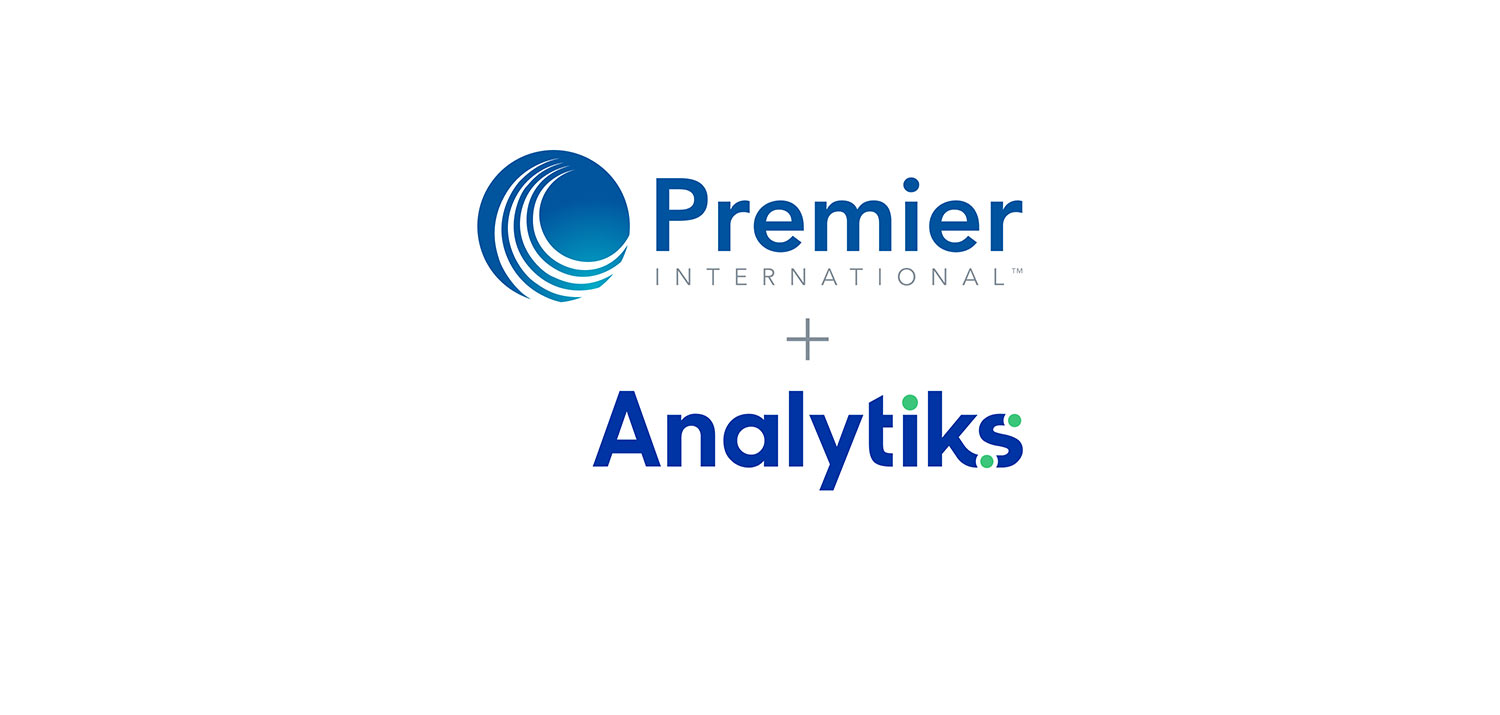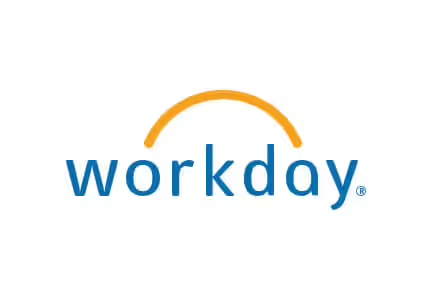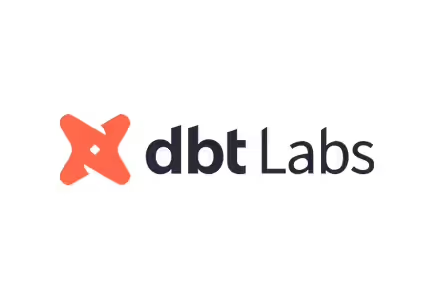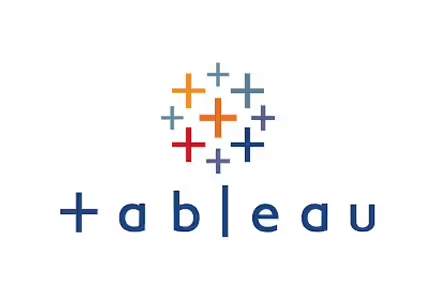Articles & case studies

Haunted by the Unknown: The Two Fears Every Data Leader Faces
Every October, we find ourselves drawn to what hides in the shadows. But in enterprise data, the real fear isn’t what jumps out; it’s what stays hidden.
In business, the darkness doesn’t wear a mask. It creeps in through uncertainty. Quietly. Systematically. And it often originates not outside the organization, but deep within its data infrastructure.
Across industries, two specific fears continue to surface. Both thrive in the murky space between speed and understanding.
1. The Fear of Broken Truth
Every organization is chasing modernization with AI-powered insights that promise agility and foresight. Yet Gartner reports that 60% of digital transformations stall. The reason? A lack of trust in internal data.
Velocity increases. But lineage becomes a blur. Automation scales. Governance struggles to catch up. When a CFO starts questioning the numbers, or when two dashboards disagree on a single KPI, what emerges isn’t just inefficiency. It’s doubt.
And doubt, as it turns out, is expensive. Deloitte estimates the cost of poor data quality at $12.9 million per year for the average organization.
Trust in data isn’t a byproduct of more tools. It comes from clear traceability. Data lineage and governance must be embedded directly in the operational core, not as afterthoughts, but as the scaffolding for every decision. When insight can be traced to its origin, confidence follows.
2. The Fear of Unseen Bias
Artificial intelligence is the new frontier. But like all frontiers, it comes with shadows.
Many enterprises are learning the hard way that opacity in models creates risk. Gartner predicts that by 2026, 60% of AI projects will fail. The root cause? Foundations that weren’t designed to support AI in the first place.
We see it often: models that drift quietly, algorithms that inherit bias, recommendations that look accurate but lack context. And the cost isn’t just technical, it’s cultural.
When leaders can’t explain why a system made a decision, they begin to lose confidence in every decision. Which is why explainability in AI is no longer a feature; it's a necessity. Frameworks that prioritize transparency ensure every model output can be traced, audited, and understood because real intelligence isn’t just predictive, it’s accountable.
Turning Fear into Foresight
Uncertainty doesn’t vanish with new software. It only recedes when clarity is baked into the system. And clarity isn’t a dashboard. It’s an environment. Built on verified lineage, sustained through active governance, and strengthened by transparent models and continuous validation.
Enterprises that prioritize clarity replace digital anxiety with data confidence. Architectures built for understanding help every stakeholder see, question, and trust the insights in front of them.
That’s why every transformation must begin with a simple but high-stakes question:
Can we trust our data enough to act boldly?
Because true modernization doesn’t just update systems, it upgrades confidence.

Why Data Visualization Is Important
What is Data Visualization?
With so much information being collected through data analysis in the business world today, we must have a way to paint a picture of that data so we can interpret it. Data visualization gives us a clear idea of what the information means by giving it visual context through maps or graphs. This makes the data more natural for the human mind to comprehend and therefore makes it easier to identify trends, patterns, and outliers within large data sets.
Why is Data Visualization Important?
No matter what business or career you’ve chosen, data visualization can help by delivering data in the most efficient way possible. As one of the essential steps in the business intelligence process, data visualization takes the raw data, models it, and delivers the data so that conclusions can be reached. In advanced analytics, data scientists are creating machine learning algorithms to better compile essential data into visualizations that are easier to understand and interpret.
Specifically, data visualization uses visual data to communicate information in a manner that is universal, fast, and effective. This practice can help companies identify which areas need to be improved, which factors affect customer satisfaction and dissatisfaction, and what to do with specific products (where should they go and who should they be sold to). Visualized data gives stakeholders, business owners, and decision-makers a better prediction of sales volumes and future growth.
What Are The Benefits of Data Visualization?
Data visualization positively affects an organization’s decision-making process with interactive visual representations of data. Businesses can now recognize patterns more quickly because they can interpret data in graphical or pictorial forms. Here are some more specific ways that data visualization can benefit an organization:
- Correlations in Relationships: Without data visualization, it is challenging to identify the correlations between the relationship of independent variables. By making sense of those independent variables, we can make better business decisions.
- Trends Over Time: While this seems like an obvious use of data visualization, it is also one of the most valuable applications. It’s impossible to make predictions without having the necessary information from the past and present. Trends over time tell us where we were and where we can potentially go.
- Frequency: Closely related to trends over time is frequency. By examining the rate, or how often, customers purchase and when they buy gives us a better feel for how potential new customers might act and react to different marketing and customer acquisition strategies.
- Examining the Market: Data visualization takes the information from different markets to give you insights into which audiences to focus your attention on and which ones to stay away from. We get a clearer picture of the opportunities within those markets by displaying this data on various charts and graphs.
- Risk and Reward: Looking at value and risk metrics requires expertise because, without data visualization, we must interpret complicated spreadsheets and numbers. Once information is visualized, we can then pinpoint areas that may or may not require action.
- Reacting to the Market: The ability to obtain information quickly and easily with data displayed clearly on a functional dashboard allows businesses to act and respond to findings swiftly and helps to avoid making mistakes.
Which Data Visualization Techniques are Used?
There are many different methods of putting together information in a way that the data can be visualized. Depending on the data being modeled, and what its intended purpose is, a variety of different graphs and tables may be utilized to create an easy to interpret dashboard. Some visualizations are manually created, while others are automated. Either way, there are many types to meet your visualization needs.
- Infographics: Unlike a single data visualization, infographics take an extensive collection of information and gives you a comprehensive visual representation. An infographic is excellent for exploring complex and highly-subjective topics.
- Heatmap Visualization: This method uses a graph with numerical data points highlighted in light or warm colors to indicate whether the data is a high-value or a low-value point. Psychologically, this data visualization method helps the viewer to identify the information because studies have shown that humans interpret colors much better than numbers and letters.
- Fever Charts: A fever chart shows changing data over a period of time. As a marketing tool, we could take the performance from the previous year and compare that to the prior year to get an accurate projection of next year. This can help decision-makers easily interpret wide and varying data sources.
- Area Chart (or Graph): Area charts are excellent for visualizing the data’s time-series relationship. Whether you’re looking at the earnings for individual departments on a month to month basis or the popularity of a product since the 1980s, area charts can visualize this relationship.
- Histogram: Rather than looking at the trends over time, histograms are measuring frequencies instead. These graphs show the distribution of numerical data using an automated data visualization formula to display a range of values that can be easily interpreted.
Who Uses Data Visualization?
Data visualization is used across all industries to increase sales with existing customers and target new markets and demographics for potential customers. The World Advertising and Research Center (WARC) predicts that in 2020 half of the world’s advertising dollars will be spent online, which means companies everywhere have discovered the importance of web data. As a crucial step in data analytics, data visualization gives companies critical insights into untapped information and messages that would otherwise be lost. The days of scouring through thousands of rows of spreadsheets are over, as now we have a visual summary of data to identify trends and patterns.
Conclusion
We need data visualization because the human brain is not well equipped to devour so much raw, unorganized information and turn it into something usable and understandable. We need graphs and charts to communicate data findings so that we can identify patterns and trends to gain insight and make better decisions faster.
At Definian, we understand the importance of data visualization and what it means to our clients. We provide them with user-friendly and beautiful visualization features and tools to depict their data in a clear and meaningful way. We’re here to ensure our clients have everything they need to make quick and informed decisions based on sound data that is easy to interpret. Contact our friendly team of professionals at analytiks today to hear how we can better your business.

ERP Readiness Starts with Clean Data: Inside a Successful MDM Strategy
Accurate, consistent, and well-governed master data is critical to a business’ operations. For our manufacturing client, their master data was managed inconsistently across systems, creating inefficiencies in operations. The organization was uncertain about the effectiveness of the proposed ERP implementation. This feeling was driven by concerns over data quality, reporting issues, and duplication across legacy systems – all of which were impacting business efficiency.
As the client prepared for a future Enterprise Resource Plann (ERP) consolidation, an MDM strategy was essential to ensure data integrity, reduce manual workarounds, and improve decision-making for master data used throughout the organization. Definian stepped in to provide a helping hand in crafting an MDM strategy and potential solutions to set them up for their future implementation.
Business Challenges
- System Fragmentation Due to M&A: The client had multiple business units on different legacy ERP systems resulting from mergers and acquisitions, leading to data duplication and inconsistent reporting.
- Duplication in Supplier information led to inaccurate supplier performance reporting, operational inefficiencies, and even strained supplier relationships. Inaccurate addresses created problems with product returns and on-time payments.
- Duplicate customer records led to duplicative communications and damaged relationships. Inaccurate delivery addresses and contact details disrupted communication, delayed payments, and sometimes led to missed deliveries.
- Lack of a Centralized Source of Truth: There was no authoritative system for customer, product, or supplier data as the information is all coming from different legacy systems. A lack of a source of truth hindered reporting and diminished operational efficiency.
- SKU Proliferation: Significant data quality issues stemmed from SKU proliferation. Our root cause analysis revealed that poor interfacing and design decisions between their product configurator and ERP system led to the continuous creation of redundant and overly specific product records.
- The product configurator created a new SKU for every unique product permutation, and the ERP blindly accepted each as a new, valid SKU.
- Existing processes resulted in millions of SKUs, despite the client offering only around 50 base products.
- Analysis showed that 80% of SKUs had no inventory or transactional activity for over two years, indicating massive redundancy.
- There was no SKU lifecycle management process, and no logic in place to check for existing similar configurations before creating new SKUs.
- Lack of Governance and Ownership: There was no defined data governance model to manage data quality, stewardship, or ownership, which is critical for sustained MDM success.
Facing these business challenges and heading into a future ERP implementation, the client needed to assess the best steps to take to ensure success. It was imperative they considered MDM as one of those steps.
How do I know that I need MDM?
There are four primary triggers for an MDM Implementation:
- My organization is considering an ERP implementation. There is no better time to investigate your data management process and data quality than when you are considering a mass migration to a new target system. A solid MDM plan can save your resources hours upon hours of work dealing with bad data.
- My organization is considering an MDM tool. The right tool for you is out there, but you need experts to help you figure out just exactly how to utilize that tool.
- My organization has gone through mergers and acquisitions. M&A can be a headache on data quality, as numerous legacy systems are often brought into the mix and allow for duplication and inaccurate reporting.
- My organization has a Product Information Management system that needs an overhaul. Your PIM needs assistance, as it is likely to create more SKUs than you need due to custom product attributes.
Our client faced all these issues, so it was clear from a business perspective to pursue an MDM implementation. In came Definian, and after months of work, the team delivered solutions and a scalable strategy.
MDM Strategy and Solutions We Delivered
- Master Record Structures: Defined master record structures for customer and product data, focusing on essential attributes and matching rules critical to daily business operations. This supports data consolidation and cleansing efforts.
- Key attributes included Customer Name and Class and how to match up to the address and contact information in the legacy systems. This analysis streamlined the uncovering of duplicate Customers, including over 1300 duplicate groups in one legacy system.
- Through match and merge rules, the entity resolution process will accurately consolidate these records, merging multiple customer instances into a single, authoritative golden record.
- Through this consolidation, the client maintains an accurate, unified customer record, which simplifies reporting and eliminates redundant data management efforts. This process establishes a trustworthy foundation for operational efficiency, informed decision-making, and reliable strategic insights.
- Governed Workflows: Developed onboarding workflows determining where data should originate (e.g., engineering (PLM) vs. sales (ERP)) and how approvals and data updates should be managed, tailored to centralized MDM models.
- This allows for a streamlined process in which everyone knows their role, and the process does not rely on outside factors to inhibit the efficiency of data entry. Reducing manual entry minimizes user error and its impact.
- Root Cause Analysis of SKU Issues: Definian identified the configurator logic and ERP behavior as causes for these issues. We provided the following recommendations to the client as solutions:
- Implement SKU lifecycle management: to archive or purge inactive SKUs.
- Add validation mechanisms to the ERP to detect and reuse existing SKUs
- Improve cross-functional communication between business units and system stakeholders to reduce fragmentation.
- Integrate MDM as a preemptive step before ERP consolidation to create a clean, authoritative source of master data, including products.
- Data Governance Framework: Introduced accountability for data ownership and stewardship within master data domains, and embedded governance considerations into MDM designs to ensure long-term data health.
- Support for Future ERP Migration: Positioned MDM as a preparatory step to ensure clean, consistent data feeds into the planned ERP consolidation, reducing downstream complexity and risk.
Definian provided a pathway to data readiness for the client. The business benefitted from proactively addressing their data quality before launching an ERP transformation, recognizing that clean and governed master data is foundational for successful digital transformation. It is important to build the foundation and toolbox for migration with an MDM framework in place and smartly look for a partner to help your organization solidify that foundation before embarking on an ERP migration. By being proactive, this client allowed themselves to understand the best tools to utilize the build up their data quality before it needs to be fixed.
Looking for a reliable partner for your ERP implementation? Reach out to our data experts for more information!

Navigating HCM Data Compliance in an Era of Policy Shifts
Recent changes in federal reporting requirements are forcing organizations to rethink how they manage and maintain Human Capital Management (HCM) data. The rollback of affirmative action mandates, evolving EEOC guidelines, and new executive orders mean that HCM data leaders must reassess their data retention policies, compliance strategies, and reporting mechanisms. These shifts create practical challenges: what data must be retained, how should it be structured, and how can organizations ensure they meet compliance standards without introducing legal risks? Staying ahead requires a proactive approach to understanding these regulations and implementing structured data management strategies.
The Legal Landscape: EEOC, AAP, and Executive Orders
Recent policy shifts have altered the way companies must handle demographic and employment data. A key example is the revocation of Executive Order 11246, which previously mandated affirmative action programs (AAP) for federal contractors. While AAP requirements may be gone, Equal Employment Opportunity Commission (EEOC) reporting obligations remain. This means that businesses must still retain and report demographic data, but they must ensure it is not used in ways that could be interpreted as discriminatory in hiring, promotions, or transfers.
From a data management perspective, this creates a unique challenge: companies must maintain high-quality demographic data for compliance while ensuring that such data does not influence employment decisions in an unlawful way.
What This Means for HCM Data Migrations
For organizations transitioning to Oracle HCM Cloud or another ERP system, these changes impact how demographic data is handled during conversion. Key considerations include:
- Retaining Critical Data Fields: Even if affirmative action reporting is no longer required, demographic details like race, gender, and veteran status should still be preserved for EEOC reporting and internal compliance audits.
- Handling Opt-In and Missing Data: Employees can choose to opt out of providing demographic data. However, for reporting purposes, some organizations may attempt to infer or categorize missing data—a risky practice that can lead to ethical issues or compliance violations.
- Role of Legal and HR Collaboration: Given the legal complexities, data migration specialists should work closely with HR and legal teams to ensure that reporting structures comply with the latest regulations.
Best Practices for HCM Data Conversions
- Define Required vs. Optional Data Fields: Understanding which fields are legally required vs. optional helps create clear data validation rules.
- Implement Pre-Validation Checks: Running pre-validation checks before migration ensures missing or incorrect data can be corrected before entering the new system.
- Leverage Automated Tools: Specialized data migration tools or pre-built data validation scripts can accelerate the conversion process and reduce manual errors.
- Ensure Compliance Through Documentation: Maintain thorough documentation of data decisions and mappings to provide an audit trail in case of compliance reviews.
- Educate Stakeholders: Training HR and IT teams on new compliance requirements ensures that data is handled correctly post-migration.
Looking Ahead
HCM data compliance is not a static process. As policies continue to shift, organizations must remain proactive in updating their data governance strategies. Engaging with legal and compliance experts early in the migration process can help mitigate risks and ensure a smooth transition.
For those involved in HCM data migrations, the goal is clear: deliver accurate, compliant, and well-structured data that supports business operations while aligning with legal obligations. By taking a structured approach to data conversion, organizations can navigate regulatory changes with confidence and efficiency.

Premier International (Now Definian) Acquires Analytiks
CHICAGO, IL, January 29, 2025 — Premiere International (Now Definian), a global leader in technology and data solutions, today announced the acquisition of Analytiks, an advanced data analytics firm. The strategic acquisition expands Definian's capabilities in transforming complex enterprise data into actionable business value.
Analytiks, a Colorado-based business intelligence and data analytics company, has established itself as a trusted partner in helping organizations harness their data assets to drive growth and operational excellence. The company's expertise spans data visualization, data science, business intelligence, data integration, and governance frameworks that enable real-time decision-making for enterprise clients.
The integration will strengthen Premier International (Now Definian)analytics practice, with Analytiks' CEO Mathieu Stark assuming the role of Practice Lead for Data Value Realization. Under Premier International's (Now Definian) umbrella, the combined organization will continue serving Analytiks' prestigious client portfolio, which includes leading global technology enterprises.
"This acquisition represents a significant milestone in Premier International (Now Definian) mission to help clients unlock the full potential of their data assets," said Craig Wood, CEO of Premier International (Now Definian). "Analytiks' proven expertise in real-time analytics and data visualization complements our existing capabilities, enabling us to deliver even more comprehensive, innovative solutions to our global client base. We are thrilled to welcome Mathieu and the Analytiks team to Definian."
Mathieu Stark, Founder and CEO of Analytiks, added, "By joining forces with Premiere International (Now Definian), we can dramatically scale our impact and deliver enhanced value to clients worldwide. Our shared vision of data-driven transformation and core values makes this partnership particularly compelling, and I'm excited to lead the Data Value Realization practice in this next phase of growth."
The acquisition follows Premiere International's (Now Definian) successful integration of Information Asset in 2023, further solidifying the company's position as a comprehensive provider of data value chain solutions for enterprises globally.
Jane Buckley, Vice President of Renovus Capital Partners ,Premier International's (Now Definian) growth capital partner, noted, "This strategic acquisition aligns perfectly with our vision of establishing Definian as the market leader in enterprise data solutions. The newly combined entity creates a formidable player in the data space that will drive significant value for clients."
Terms of the transaction were not disclosed.
For more information on Premier International (Now Definian) Data Value Realization offering, please visit this page on our website.
About Premier International (Now Definian)
Premier International (Now Definian) helps organizations unleash the full potential of their data. Our expertise in data-led business transformation, data fundamentals and migration, risk management and data value realization helps companies maximize the value of their data, empowering them to achieve success across the entire data value chain. Having successfully completed thousands of projects since our founding in 1985, many of the world’s leading brands, technology companies, and system integrators rely on Premier International (Now Definian) to solve their most complex data challenges. For more information, please visit premier-international.com.
About Renovus Capital Partners
Founded in 2010, Renovus Capital Partners is a lower middle market private equity firm specializing in the Knowledge and Talent industries. From its base in the Philadelphia area, Renovus manages over $1 billion across its three sector focused funds and other strategies. The firm’s current portfolio includes over 25 U.S. based businesses specializing in education and training, healthcare services, technology services and professional services. Renovus typically partners with founder-led businesses, leveraging its experience within the industry and access to debt and equity capital to make operational improvements, recruit top talent, pursue add-on acquisitions and oversee strategic growth initiatives. For more information, please visit renovuscapital.com.

Why Modern Data Quality is Essential: A Machine-First Approach for Better Business Outcomes
Data quality is a critical business imperative. Poor data quality impacts organizations of all sizes and industries, leading to broken processes, inaccurate reporting, and a loss of trust in decision-making systems. Despite this awareness, many organizations still struggle to address data quality due to the scale of the challenge. Traditional approaches, which rely heavily on manual processes, are no longer sufficient. The modern solution is to embrace a machine-first approach that leverages automation, AI, and machine learning to streamline data quality management, ensuring faster and more accurate outcomes.
The Shift to Modern Data Quality: From People-First to Machine-First
Traditional data quality frameworks are reactive, requiring manual effort to define standards, build rules, and address issues. This model often leads to delays and inefficiencies, particularly as data volumes grow. Moreover, traditional solutions can be difficult to scale, limiting their ability to handle the increasing variety and velocity of data.
Modern data quality flips this script by taking a machine-first approach. Organizations can use AI and machine learning to automate key processes, such as data profiling, rule generation, and anomaly detection. This reduces the need for manual intervention, allowing organizations to maintain high data quality standards more efficiently and achieve faster time-to-value.
Key Features of Modern Data Quality Solutions
- AI and Automation: Modern solutions use AI/ML to automate data profiling, rule generation, and anomaly detection. These solutions analyze vast datasets to identify inconsistencies and suggest corrections, streamlining the remediation process and reducing the workload for data stewards.
- Real-Time Monitoring and Observability: Unlike traditional frameworks that rely on batch processing, modern solutions offer continuous monitoring of data flows and pipelines. This enables organizations to detect and address issues in real time, minimizing disruptions.
- Scalability and Adaptability: Modern solutions integrate easily with cloud-based systems and can adapt to new data sources. This ensures that organizations can maintain consistent data quality across all systems, no matter how complex their data environment.
- Self-Service and User Empowerment: These solutions feature intuitive, user-friendly interfaces that empower non-technical users to engage directly with data quality processes. This reduces dependency on IT, fosters greater transparency, and encourages broader data literacy across the organization.
- Robust Issue Identification and Resolution: Modern data quality solutions enable organizations to quickly identify and resolve data issues at various levels, including attribute, table, and dataset. Equipped with advanced dashboards, root cause analysis, and impact analysis through data lineage, these solutions help teams detect and correct data problems more efficiently, ensuring data reliability and minimizing downtime caused by errors.
- Customizable Solution Capabilities: Rather than relying solely on pre-built features, today’s data quality solutions offer a flexible mix of ready-to-use functionalities and customizable workflows. This enables organizations to tailor the platform to their specific data quality needs, enhancing adaptability and effectiveness across varied use cases.
Why Modern Data Quality Matters: Key Business Benefits
Poor data quality impacts every aspect of an organization, from business processes and customer experience to delivering accurate insights and enabling strategic decision-making. Inaccurate or incomplete data leads to bad decisions, inefficiencies, and missed opportunities. By adopting a machine-first approach to data quality, organizations can achieve:
- Faster Insights: Automation reduces the time needed to prepare data for analysis, providing faster access to insights and quicker decision-making.
- Increased Trust and Confidence: Consistently high-quality data builds trust among stakeholders, enabling informed decisions with confidence.
- Cost Savings: Reducing manual intervention lowers operational costs associated with maintaining data quality programs.
- Scalability and Flexibility: Modern solutions can scale effortlessly, integrating with various data environments, whether on-premises, in the cloud, or across hybrid systems.
The Power of Data Quality as a Service (DQaaS)
Implementing a comprehensive data quality solution can still be daunting. Building and maintaining in-house data quality teams requires significant resources, making it a time-intensive and costly commitment that may not suit every organization’s needs. To address this, Definian International, a leading data services company, has partnered with DQLabs to offer Data Quality as a Service (DQaaS). This joint solution allows organizations to access advanced data quality capabilities without a significant capital investment.
DQLabs is an automated, modern data quality and observability platform that delivers reliable and accurate data for better business outcomes. The platform harnesses the combined power of Data Observability, Data Quality, and Data Discovery to help data producers, consumers, and leaders turn data into action more quickly, easily, and collaboratively. The platform is built with an automation-first approach, featuring self-learning and self-serve capabilities to empower all data users.
With DQaaS, organizations can:
- Deploy Quickly and Efficiently: Connect data sources to the DQLabs platform and start seeing results within weeks. The service manages setup, integration, and monitoring, ensuring a smooth deployment.
- Benefit from Predictable Costs: DQaaS is offered at a standard monthly fee, allowing organizations to manage their budget effectively while testing the benefits of modern data quality without significant capital expenditure.
- Leverage Expert Guidance: Definian International’s team works closely with clients, providing expert guidance from setup to continuous improvement, ensuring alignment between data quality initiatives and business objectives.
Start Your Journey with Modern Data Quality
Transitioning to modern data quality doesn’t have to be complex or expensive. With DQaaS, Definian International and DQLabs bring a comprehensive, machine-first data quality solution to your business, enabling you to see immediate benefits. This service provides a low-risk, cost-effective way to experience modern data quality, helping you improve data accuracy, drive better business outcomes, and prepare for future data challenges.
If you’re ready to transform your data practices, contact Definian International today. Learn how DQaaS can help you achieve data excellence and unlock the full potential of your data.

Why Business Intelligence Is Important
Why Business Intelligence is Important
We are living in the age of technological progression. Digital advancements have completely revolutionized our everyday lives, and one of the largest impacts felt has been in the business world. Companies now have access to data-driven tools and strategies that allow them to learn more about their customers and themselves than ever before, but not everyone is taking advantage of them. Today we’re going to breakdown Business Intelligence and why it’s crucial to the success and longevity of your organization.
What Is Business Intelligence?
Before we jump into the importance, we must first understand Business Intelligence and how it applies to your company’s strategic initiatives. The term Business Intelligence (BI) refers to the technologies, applications, strategies, and practices used to collect, analyze, integrate, and present pertinent business information. The entire purpose of Business Intelligence is to support and facilitate better business decisions. BI allows organizations access to information that is critical to the success of multiple areas including sales, finance, marketing, and a multitude of other areas and departments. Effectively leveraging BI will empower your business with increased actionable data, provide great insights into industry trends, and facilitate a more strategically geared decision-making model.
To illustrate BI in action, here are a few departmental specific examples of insights and benefits that can come from its adoption and application:
- Human Resources: HR can tremendously benefit from the implementation of Business Intelligence utilizing employee productivity analysis, compensation and payroll tracking, and insights into employee satisfaction.
- Finance: Business Intelligence can help finance departments by providing invaluable and in-depth insights into financial data. The application of BI can also help to track quarterly and annual budgets, identify potential problem areas before they cause any negative impacts, and improve the overall organizational business health and financial stability.
- Sales: Business Intelligence can assist your company’s sales force by providing visualizations of the sales cycle, in-depth conversion rates analytics, as well as total revenue analysis. BI can help your sales team to identify what’s working as well as points of failure which can result in dramatically improved sales performance.
- Marketing: BI provides the marketing department with a convenient way to view all current and past campaigns, the performance and trends of those campaigns, a breakdown of the cost per lead and the return on investment, site traffic analytics, as well as a multitude of other actionable pieces of information.
- Executive Leadership: Plain and simple, Business Intelligence allows organizations to reduce costs by improving efficiency and productivity, improving sales, and revealing opportunities for continuous improvement. Business Intelligence allows members of Executive Leadership to more easily measure the organization’s pulse by removing gray areas and eliminating the need to play the guessing game on how the company is doing.
Why Is Business Intelligence Important?
Now you know what Business Intelligence is, what it’s capable of, but the question remains; why is Business Intelligence so important to modern-day organizations? The main reasons to invest in a solid BI strategy and system are:
- Gain New Customer Insights: One of the primary reasons companies are investing their time, money, and efforts into Business Intelligence is because it gives them a greater ability to observe and analyze current customer buying trends. Once you utilize BI to understand what your consumers are buying and the buying motive, you can use this information to create products and product improvements to meet their expectations and needs and, as a result, improve your organization’s bottom-line.
- Improved Visibility: Business Intelligent organizations have better control over their processes and standard operating procedures, as the visibility of these functions is improved by a BI system. The days of skimming through hundreds of pages of annual reports to assess performance are long gone. Business Intelligence illuminates all areas of your organization helps you to readily identify areas for improvement and allow you to be prepared instead of reactive.
- Actionable Information: An effective Business Intelligence system serves as a means to identify key organizational patterns and trends. A BI system also allows you to understand the implications of various organizational processes and changes, allowing you to make informed decisions and act accordingly.
- Efficiency Improvements: BI Systems help improve organizational efficiency which consequently increases productivity and can potentially increase revenue. Business Intelligence systems allow businesses to share vital information across departments with ease, saving time on reporting, data extraction, and data interpretation. Making the sharing of information easier and more efficient permits organizations to eliminate redundant roles and duties, allowing the employees to focus on their work instead of focusing on processing data.
- Sales Insight: Sales and marketing teams alike want to keep track of their customers, and most utilize Customer Relationship Management (CRM) application to do so. CRMs are designed to handle all interactions with customers. Because they house all customer communications and interactions, there is a wealth of data and information that can be interpreted and used to strategic initiatives. BI systems help organizations with everything from identifying new customers, tracking and retaining existing ones, and providing post-sale services.
- Real-Time Data: When executives and decision-makers have to wait for reports to be compiled by various departments, the data is prone to human error and is at risk of being outdated before it’s even submitted for review. BI systems provide users with access to data in real-time through various means including spreadsheets, visual dashboards, and scheduled emails. Large amounts can be assimilated, interpreted, and distributed quickly and accurately when leveraging Business Intelligence tools.
- Competitive Advantage: In addition to all of these great benefits, Business Intelligence can help you gain insight into what your competitors are doing, allowing your organization to make educated decisions and plan for future endeavors.
Conclusion
In summary, BI makes it possible to combine data from multiple sources, analyze the information into a digested format, and then disseminate the information to relevant stakeholders. This allows companies to see the big picture and make smart business decisions. There are always inherent risks when it comes to making any business decision, but those risks aren’t as prominent or worrisome when implementing an effective and reliable BI solution. Business Intelligent organizations can move forward in an increasingly data-driven climate with confidence knowing they are prepared for any challenge that arises.
The Definian team is here to improve your organization’s efficiency by leveraging your existing data. We will provide you with the tools your business needs to transform complex, unorganized, and confusing data into clear and actionable insights. This helps to speed your decision-making processes and ensures that all your business decisions are educated and backed with reliable data, and lots of it! Get in touch with the Definian team today to see how we can improve your business!

5 Key Takeaways from Workday Rising 2024
Last week, some of our team hit the road and headed to Vegas for Workday Rising. This year’s conference offered a deep dive into the challenges and opportunities facing organizations in a fast-moving digital landscape, where there is more technology and data available than ever before. Didn’t make it to the show? Here are the five key takeaways we brought back from the event:
1. Data Quality Remains a Priority (and a Challenge)
Organizations continue to struggle with data quality, highlighting the difficulty in accessing the data they need. A recurring pain point at the conference was the issue of handling historical data—how to store, access, and analyze it without burdening production systems. The sheer volume of data accumulated over time makes it hard to maintain quality while ensuring that critical information is accessible when needed. Companies need better strategies to tackle these data challenges, especially as they continue to rely on data-driven decisions.
2. Change Management Doesn't End After Go-Live
A crucial reminder from the event was that change management extends far beyond the go-live date of any new system implementation. Many attendees noted that using new systems posed unforeseen challenges, reinforcing the need for continuous support and training. Adapting to a new way of working requires time, and organizations must be proactive in managing change post-implementation to drive user adoption and system optimization.
3. Analytics: A Tool for Better Decision-Making
Another major focus at the conference was the importance of analytics in driving better-informed decisions. Organizations that can effectively leverage their data with the right analytical tools are able to make smarter decisions faster. Workday's commitment to improving analytics was evident throughout the conference, with discussions on how these tools can empower teams across finance, HR, and operations. As businesses evolve, those who excel at using analytics will gain a competitive edge.
4. Don’t Underestimate Data Migration
A key discussion repeated throughout the conference was the difficulty of data migration. Many organizations admitted that they were not fully prepared for the complexities involved in moving large amounts of data into new systems. Migrating data—especially when it spans multiple systems, formats, and decades—requires more than just technical know-how; it demands comprehensive planning and strategy. Workday Rising attendees shared stories of underestimating this process and the lessons learned from the experience.
5. Workday’s “Forever Forward” Vision: The Future of AI and Innovation
The overarching theme of the conference, “Forever Forward”, was perfectly aligned with Workday’s mission to continuously innovate. One of the most exciting announcements was Workday Illuminate™, a next-generation AI product designed to accelerate decision-making and problem-solving in HR and finance. In a world moving at lightning speed, Workday’s new AI tools, combined with Orchestrate, and Extend, are unlocking new possibilities for businesses to grow and innovate. This forward-thinking approach signals a future where AI is central to business operations, and those that leverage these technologies can achieve exponential growth.
As Workday continues to push the boundaries of what’s possible, companies have an opportunity to follow suit, embracing new technologies and strategies to stay ahead in a fast-paced world. If your organization is looking to tackle any of these key areas, the Definian team would love to help. As an official Workday partner, we have been successfully helping many companies successfully migrate to Workday and unlock the full potential of their data beyond implementation.

Premier International (Now Definian) Appears on Prestigious Inc. 5000 List for Second Time
Definian Makes the 2024 Inc. 5000, Through Continued Growth and Success
NEW YORK, August 13, 2024 – Inc. revealed today that Premier International (Now Definian) ranks No. 3604 on the 2024 Inc. 5000, its annual list of the fastest-growing private companies in America. The prestigious ranking provides a data-driven look at the most successful companies within the economy’s most dynamic segment—its independent, entrepreneurial businesses. Microsoft, Meta, Chobani, Under Armour, Timberland, Oracle, Patagonia, and many other household-name brands gained their first national exposure as honorees on the Inc. 5000.
"Making the Inc. 5000 list for the second time is a testament to the value we deliver to our clients and the dedication and expertise of our team at Definian,” states Craig Wood, CEO of Definian. “This achievement is exceptionally rare for a 39-year-old company and underscores our unwavering commitment to providing exceptional data services across the entire data value chain that drive success for our clients. We are honored to be recognized among such esteemed companies and will continue to prioritize excellence and innovation, ensuring our clients achieve their goals with the support of our talented team."
The Inc. 5000 class of 2024 represents companies that have driven rapid revenue growth while navigating inflationary pressure, the rising costs of capital, and seemingly intractable hiring challenges. Among this year’s top 500 companies, the average median three-year revenue growth rate is 1,637 percent. In all, this year’s Inc. 5000 companies have added 874,458 jobs to the economy over the past three years.
For complete results of the Inc. 5000, including company profiles and an interactive database that can be sorted by industry, location, and other criteria, go to www.inc.com/inc5000.
“One of the greatest joys of my job is going through the Inc. 5000 list,” says Mike Hofman, who recently joined Inc. as editor-in-chief. “To see all of the intriguing and surprising ways that companies are transforming sectors, from health care and AI to apparel and pet food, is fascinating for me as a journalist and storyteller. Congratulations to this year’s honorees, as well, for growing their businesses fast despite the economic disruption we all faced over the past three years, from supply chain woes to inflation to changes in the workforce.”
About Definian
Definian is a data services company that helps organizations unleash the full potential of their data. The company delivers services across the entire data value chain, including data strategy, data value realization and the critical areas of data fundamentals that are the backbone of maximizing data value. Driven by our values which we refer to as “The Definian Way”, we are relentlessly focused on our clients and their success, and we have a great time working together to deliver on our promises. We believe that recruiting and retaining top talent are key to serving our clients and are proud to have our culture recognized by others as well. In addition to the Inc. 5000 list of America’s Fastest-Growing Private Companies, Definian has been named one of The Best and Brightest Companies to Work For® in Chicago, one of Crain’s top 100 Best Places to Work in Chicago, and one of the Built In Best Places to Work, both in the US and Chicago.
More about Inc. and the Inc. 5000
Methodology
Companies on the 2024 Inc. 5000 are ranked according to percentage revenue growth from 2020 to 2023. To qualify, companies must have been founded and generating revenue by March 31, 2020. They must be U.S.-based, privately held, for-profit, and independent—not subsidiaries or divisions of other companies—as of December 31, 2023. (Since then, some on the list may have gone public or been acquired.) The minimum revenue required for 2020 is $100,000; the minimum for 2023 is $2 million. As always, Inc. reserves the right to decline applicants for subjective reasons. Growth rates used to determine company rankings were calculated to four decimal places.
About Inc.
Inc. Business Media is the leading multimedia brand for entrepreneurs. Through its journalism, Inc. aims to inform, educate, and elevate the profile of our community: the risk-takers, the innovators, and the ultra-driven go-getters who are creating our future. Inc.’s award-winning work achieves a monthly brand footprint of more than 40 million across a variety of channels, including events, print, digital, video, podcasts, newsletters, and social media. Its proprietary Inc. 5000 list, produced every year since its launch as the Inc. 100 in 1982, analyzes company data to rank the fastest-growing privately held businesses in the United States. The recognition that comes with inclusion on this and other prestigious Inc. lists, such as Female Founders and Power Partners, gives the founders of top businesses the opportunity to engage with an exclusive community of their peers, and credibility that helps them drive sales and recruit talent. For more information, visit www.inc.com.
For more information on the Inc. 5000 Conference & Gala, to be held from October 16 to 18 in Palm Desert, California, please visit http://conference.inc.com/.

Mastering Data Migration for Configured Products in Steel and Process Manufacturing
In industries like steel manufacturing, where configured products and intricate process manufacturing intersect, data migration becomes a critical yet challenging endeavor. These environments demand a meticulous approach to ensure that systems not only capture the nuances of the manufacturing process but also provide the agility to adapt to evolving product requirements.
The Complexity of Configured Products
Configured products in manufacturing often arise from dynamic and highly customized processes. For example, steel manufacturing might involve rolling a particular grade of steel with specific thickness, hardness, and other service quality requirements. When a new product variation emerges, it requires recalibrating existing configurations to meet unique demands.
Migrating data in such scenarios involves more than transferring static datasets. Systems like Manufacturing Execution Systems (MES) must dynamically extrapolate routing steps, testing requirements, and metallurgical constraints to accommodate new product specifications. This adaptability requires data migration to account for:
- Overlapping Specifications: Industry standards (e.g., ASTM), customer-specific requirements, and in-house metallurgical expertise often result in overlapping specifications. Data systems must reconcile these layers without compromising quality or compliance.
- Dynamic Configuration Rules: New product variations demand that the system derive routing steps and process parameters on the fly. Legacy systems may lack the sophistication to handle such real-time adaptations during migration.
- Expert Knowledge Integration: In-house trade knowledge must be encoded into the system during migration to ensure operational continuity. To cite highly specific examples, this might include insights into how manganese levels influence hardness and machinability, or limitations of specific machines on certain steel gauges.
Process Manufacturing: A Data Challenge
Process manufacturing often involves intricate recipes, variable inputs, and precise control over chemical or physical transformations. This approach demands robust systems to track materials, monitor quality, and adjust production parameters in real-time to account for fluctuations in raw materials, equipment performance, and environmental conditions.
For example, achieving the desired hardness in steel might require keeping alloying metals levels within strict tolerances during the smelting process, using precise rolling speed and pressure in the cold rolling process, and special testing to guarantee quality of the final product. Such precision demands accurate and interoperable data systems. However, migrating data for process manufacturing often uncovers pain points such as:
- Data Normalization: Legacy systems might store data inconsistently, making it difficult to normalize during migration.
- Validation Gaps: Older systems often lack robust validation mechanisms, leading to the proliferation of duplicates and errors in migrated data.
- Interconnected Dependencies: Process parameters are tightly interlinked, meaning a change in one parameter can ripple through multiple stages. Migrating such data requires preserving these dependencies.
Bridging Legacy Systems with Modern Solutions
Steel companies often transition from legacy systems to modern platforms like Oracle Cloud ERP or MES solutions to address these complexities. However, successful migration hinges on aligning the unique demands of process manufacturing with the capabilities of the target system. Key strategies include:
- Data Profiling and Cleansing: Before migration, it’s crucial to conduct a thorough data audit to identify gaps, redundancies, and inconsistencies. For example, reconciling varying manganese specifications across overlapping datasets ensures uniformity.
- Metadata Management: Leveraging metadata can help capture relationships and rules, such as specific hardness-to-thickness mappings or grade-specific constraints. This ensures the target system can replicate complex configurations seamlessly.
- Automated Validation Frameworks: Incorporating automated validation rules during migration can prevent the introduction of errors. For instance, systems can flag anomalies where customer specifications diverge from in-house metallurgical constraints.
- Collaboration Between Experts and Technologists: Bridging the gap between metallurgical experts and IT teams is essential. For instance, translating expert knowledge into system rules can preserve critical insights during migration.
Lessons Learned from Real-World Scenarios
A recurring theme in data migration projects for configured product and process manufacturing is the integration of expert knowledge with system capabilities. For example, metallurgists often impose stricter constraints than industry standards, such as narrower manganese ranges, to optimize machine performance. Migrating this implicit knowledge into explicit system rules is essential but requires collaboration across disciplines.
Additionally, migrating overlapping specifications highlights the need for robust reconciliation processes. Consider a scenario where ASTM standards specify a manganese range of 0.8-1.2%, but customer requirements and in-house expertise demand narrower ranges for certain products. Migration efforts must encode these nuances to prevent downstream production issues.
Enabling Future-Ready Manufacturing
Beyond solving immediate challenges, data migration for configured products and process manufacturing must lay the groundwork for future scalability and innovation. This includes:
- Integration with Advanced Analytics: Modern systems equipped with advanced analytics can optimize production by identifying trends and anomalies in real-time.
- Support for Sustainability Goals: Migrated data should enable manufacturers to track and reduce environmental impact, aligning with broader industry sustainability initiatives.
- Agile Configuration Management: Systems must allow for rapid reconfiguration to address evolving customer demands or market conditions.
Conclusion
Data migration for configured product and process manufacturing, particularly in the steel industry, is a multidimensional challenge. By addressing overlapping specifications, dynamic configuration rules, and expert knowledge integration, manufacturers can ensure a seamless transition to modern systems. This not only resolves current complexities but also sets the stage for a more agile and efficient manufacturing future.
Success hinges on a collaborative approach, where technical solutions are informed by deep industry expertise. As manufacturers continue to adopt cutting-edge platforms, the lessons learned from these migrations will serve as a blueprint for navigating the intricate relationship between data, processes, and innovation. To explore how your organization can overcome these challenges and leverage best practices in data migration, connect with our team of experts today and take the first step toward a smarter, more resilient future.

The Definian Story: A Legacy of Data Leadership
Change is inevitable, especially in technology.
For 40 years, we operated as Premier International, helping organizations solve their most complex data challenges. Since our founding in 1985, our work has always been about more than just moving information from one system to another. It has been about transforming data into clarity and outcomes that matter. We were pioneers in this space, and over time both the industry and our role within it have evolved.
Our new brand, Definian, reflects that evolution.
Defining What’s Next
Definian captures the idea of helping organizations define what comes next in their data journey. Data is now the heartbeat of every modern enterprise, and our role is to help leaders harness it with precision and purpose. We guide companies through every stage so they can unlock opportunities, spark innovation, and achieve results that matter.
What We Do
We are an AI-enabled company, built on the belief that strong data foundations are the key to unlocking the power of technology. AI is both how we work and what we deliver. It shapes our approach across strategy, modernization, and insights, and it also defines a dedicated area of focus where advanced methods like machine learning, automation, and predictive analytics open new possibilities.
That journey is shaped by what we call the Definian Data Value Chain, organized into four areas of expertise:
- Strategy: Defining AI strategies, establishing data-driven approaches, and designing future-state architectures that provide clarity and direction.
- Modernization: Delivering governance, quality and observability, master data management, migration, engineering, and archiving to create trusted, future-ready systems.
- Insights: Turning data into decision-making power through visualization, reporting, analytics, and modeling.
- AI & Automation: Applying data science, machine learning, predictive analytics, and workflow automation to open entirely new possibilities.
This combination ensures organizations have the clarity, infrastructure, and insights needed to ensure they are ready to use AI responsibly and effectively to deliver measurable business value.
The Story Behind the Name
The name Definian was chosen with care. It comes from the word define, signaling clarity, direction, and purpose. Just as we help leaders define strategies and outcomes, Definian itself embodies precision and intentionality. The name also carries a sense of forward movement, not only defining where organizations are today, but guiding them toward what comes next.
Definian is more than a name. It is a statement of our promise: to create definition in a world of complexity, and to turn data into possibility.
The Design and Colors
As we step into our future as Definian, our logo and visual identity tell a story that is both deeply rooted and forward-looking.
The logotype itself is modern and intentional, with lowercase letters that convey confidence without pretense. The open corners of the “d” and “n” suggest progress and momentum, while the two dotted “i”s in Definian green represent the dual nature of our work: technical precision and creative possibility.
The bold blue is a deliberate evolution of Premier’s signature color, honoring our 40-year legacy while signaling a stronger, more confident vision. Complementing it is a fresh green, chosen to introduce warmth and approachability. Together, the palette reflects both precision and partnership, the pillars that define how we serve our clients.
Every element was designed with purpose, reflecting who we are, what we value, and how we guide our clients toward the future.
Most Importantly, What Has Not Changed
What has not changed is our foundation. We continue to leverage our deep expertise across the full data lifecycle, delivering decades of meaningful results. Our trusted partnership model continues to put clients first, and our focus remains on turning data into outcomes that fuel innovation, including AI-enabled solutions.
Definian represents more than a new brand. It is our renewed commitment to helping organizations see the path ahead and navigate it with confidence. When data is harnessed with purpose, and when it is ready to power AI, it becomes more than information. It becomes possibility.
The future is here. And the path is clear.
We are Definian.
———
(Note: Our fully updated website will be coming in Fall 2025. For more information on Definian, please read the press release that accompanied our brand launch.)

Data Governance: Taming the Wild Family Circus for Indian Companies
Picture this: Your company’s data is like a big, chaotic family household. You’ve got teenagers hoarding secrets in their rooms, toddlers finger-painting on important documents, and that one uncle who keeps bringing home random objects he found on the street. Sound familiar? Well, welcome to the world of data governance — it’s time to bring some order to this madhouse!
What is Data Governance?
Data governance is like being the superhero parent in this family circus. It involves:
- Knowing where everyone is and what they’re up to (tracking your data)
- Setting house rules that everyone (mostly) follows (creating data policies)
- Making sure little Timmy doesn’t flush the family jewels down the toilet (protecting valuable data)
- Keeping the nosy neighbors (hackers) from peeking through your windows (data security)
Why Should Indian Companies Invest in Data Governance?
- Avoiding Family Feuds (and Fines): Remember when your kids broke that priceless vase playing indoor cricket? Poor data practices can lead to similarly expensive disasters. With the new Digital Personal Data Protection Act (DPDPA) coming, you don’t want the government playing the role of an angry grandmother!
- Winning “Family of the Year” Award: When your family behaves well in public, everyone adores you. Similarly, good data governance makes customers and partners trust you more. It’s like winning the “Most Responsible Data Family” award!
- Finding the TV Remote (and Insights) Faster: Ever spent hours searching for the remote only to find it under the sofa? Good data governance helps you find the right data quickly, leading to better decisions. No more data treasure hunts!
- Saving on Grocery Bills (and Operational Costs): Proper data management is like meal planning for a family of 12. It saves money, reduces waste, and prevents buying that fifth bottle of ketchup you didn’t need.
- Being Ready for Surprise Visits: Whether it’s unexpected in-laws or a data audit, good governance helps you quickly tidy up and put on a good show.
- Impressing the International Relatives: When your family home is well-organized and welcoming, relatives from around the world are eager to visit and stay connected. Strong data practices make your company attractive to global partners.
How Data Governance Improves India’s Global Standing
- Becoming the Favorite Cousin: When Indian companies nail data governance, suddenly India becomes the cousin everyone wants to hang out with at the global family reunion.
- Speaking the Same Language: No more awkward family gatherings where no one understands each other. Aligning with global data standards is like everyone finally agreeing on which cricket team to support.
- Winning the Family Talent Show: India can show off its innovative data practices like a kid showing off a new dance routine — impressing everyone and maybe winning a few competitions.
- Attracting the Rich Uncles: Just as a well-behaved family attracts generous relatives, good data governance can make India more appealing to foreign investors. “Look how responsible they are with their data! Let’s give them some money to play with.”
- Having a Say in Family Decisions: With great data powers comes great responsibility — and influence. India can help shape global data policies like that one charismatic cousin who somehow always decides where the next family vacation will be.
Why Invest Now?
The DPDPA is like a strict new babysitter coming to town. Before they arrive, you’d better:
- Clean up the mess under the bed (assess your current data practices)
- Invest in some child-proofing equipment (get the right data tools and training)
- Establish family rules (develop data governance strategies)
- Teach everyone to pick up their own socks (create a culture of data responsibility)
Conclusion
Data governance isn’t just about following rules, it’s about turning your data family from the chaotic bunch that everyone gossips about into the enviable crew that wins “Best in Show” at the global data dog show. By investing in data governance now, Indian companies aren’t just preparing for a new babysitter (DPDPA); they’re setting themselves up to be the family that every other country wants their kids to have playdates with.
Remember, a well-governed data family doesn’t just avoid time-outs — it thrives, succeeds, and might even score an invitation to the fancy international family reunions. So, put on your superhero cape, gather your unruly data children, and let’s show the world that Indian companies know how to run a tight ship… or at least a ship where not everything is on fire all the time!














